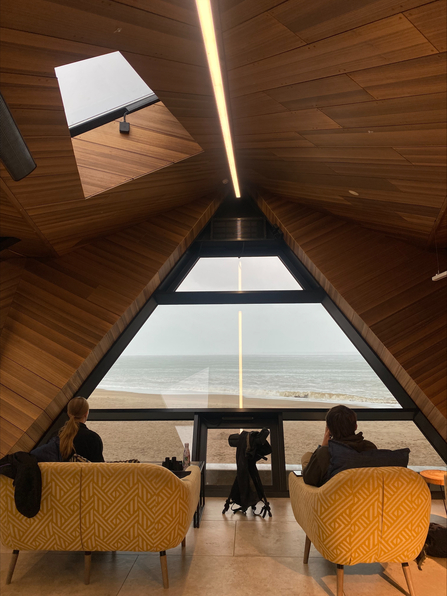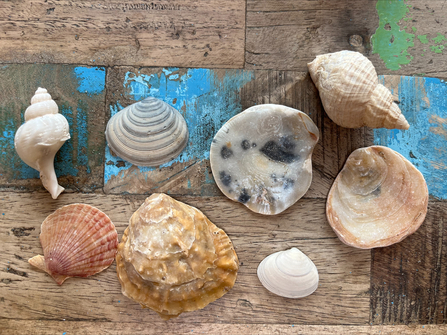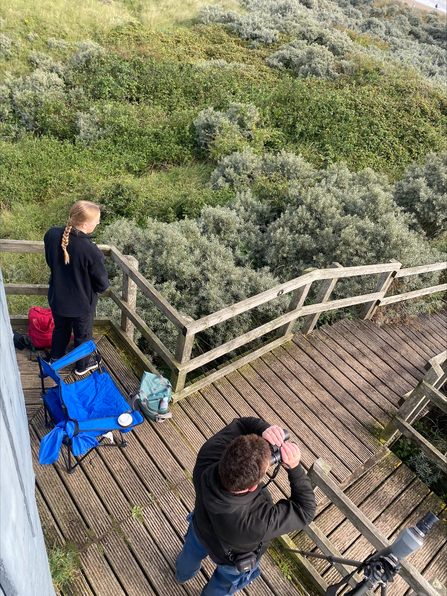Every year, Sea Watch Foundation hold a week-long National Whale and Dolphin Watch (NWDW) in order to gain a better overview of the distribution of cetaceans (dolphins, whales and porpoises) within UK and Irish waters. Although cetaceans are the focus of this week, Sea Watch Foundation collect data on cetaceans, seals, sharks, turtles, sunfish and tuna year-round, so if you spot any of these animals remember to submit your findings to Sea Watch Foundation via their website or app!
DAY 1:
For our first day participating in the NWDW, we were based at the North Sea Observatory, Chapel St Leonards. I had never visited the North Sea Observatory before, and it definitely didn’t disappoint! The building opened in 2018, and is purpose-built to watch marine wildlife, with large windows allowing you to look out to sea. We joined Richard Doan, one of the Coastal Wardens for Lincolnshire Wildlife Trust, who helped us to identify many of the species we saw. Unfortunately, we saw no cetaceans, but plenty of seabirds and several grey seals paid us a visit. The most notable seabirds we saw were; common terns, sandwich terns, arctic skua, razorbills, and common scoater. Although sad not to see any cetaceans, it was amazing to see such a diversity of seabird species and it helped us to realise the importance of the east coast as a migratory route for these birds.




